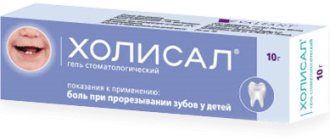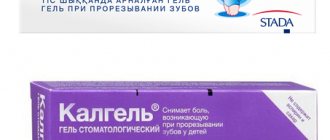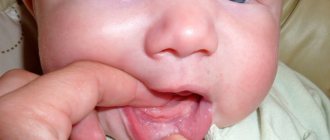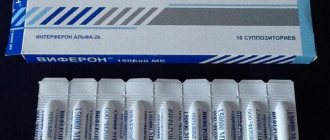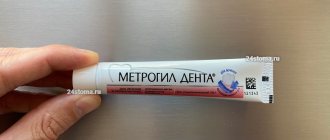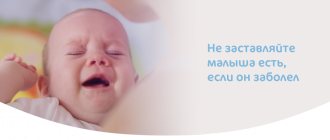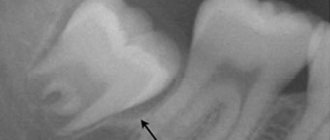pharmachologic effect
Manufacturer: PHARMACEUTICAL WORKS JELFA, Poland
Release form: gel
Active ingredient: choline salicylate, cetalkonium chloride
Synonyms: Metrodent, Dentamet, Rotokan
Cholisal is used to treat diseases of the oral cavity. When applied, the gel is quickly absorbed and spreads inside the affected tissues. Cholisal eliminates bleeding gums and bad breath, relieves pain and relieves inflammation, reduces the number of pathogenic bacteria, and acts against fungal infections.
The adhesive base increases the effectiveness of the drug and retains the active ingredients on the surface for up to 6 hours. The gel relieves pain in 2 minutes.
Cholisal composition, release form
Cholisal is a modern dental drug with a pronounced analgesic, anti-inflammatory and antibacterial effect. The gel acquires its unique healing properties thanks to a combination of the following active ingredients:
- Anise oil (1.6 mg per 1 g of gel) is a natural oil that has a calming effect on inflammation and kills pathogenic microorganisms;
- cetalkonium chloride (87.1 mg per 1 g of gel) – a broad-spectrum antiseptic;
- Choline salicylate (100 mcg per 1 g of gel) is an analgesic that also relieves inflammation.
Auxiliary components: 50 mg of glycerin, up to 1 g of water, 390 mg of ethyl alcohol, 20 mg of hyaetellose, 1.5 mg of methyloxybenzoate, 0.8 mg of propyl parahydroxybenzoate.
Why is this composition so good?
When most dental preparations that are used topically differ only in their superficial effect, Cholisal gel penetrates into the deep layers of the oral mucosa. This property is given to the gel by the active substance choline salicylate. The component formed from salicylic acid acts on the site of inflammation, blocking inflammatory mediators in the oral mucosa. The analgesic component has a light structure, so it penetrates quite deeply into the layers of the mucous membrane.
Cholisal gel acts simultaneously on bacteria, fungi and viruses; this universal property is given to it by a broad-spectrum antiseptic - cetalkonium chloride.
The product is available in gel form, 10 g in aluminum tubes, sealed cardboard packs.
Indications for use of Cholisal
Cholisal is used to treat diseases of the oral cavity, relieves pain, relieves inflammation in soft tissues in the following pathologies and conditions:
- periodontal disease;
- stomatitis;
- gingivitis;
- periodontitis;
- injuries from wearing prostheses;
- mechanical damage to the gums;
- painful symptoms from teething;
- lip inflammation;
- fungal infections;
- microsurgical manipulations in the mouth;
- development of lichen planus;
- Stevens-Johnson syndrome.
When to use Cholisal is not recommended:
- An allergy to the components was detected.
- Until the child is one year old.
- Pregnant and lactating women.
Side effects of Cholisal: when applied, a slight tingling and burning sensation is felt. The feeling of discomfort goes away in 3–5 minutes. It is possible to develop allergic reactions to the components of the gel.
Disadvantages of the medication
No matter how effective this drug is, it has certain disadvantages. For example, for a tube of small volume you will have to pay a relatively large amount. In addition, among its disadvantages:
- Pronounced aroma and taste of anise. Due to this, salivation often becomes abundant, and the mucous membranes of the oral cavity become irritated.
- Presence of contraindications.
- Possible side effects.
No other shortcomings have been identified in Kholisal. It has proven itself to be an effective and efficient drug. Most often it is well tolerated.
Cholisal - instructions for use
A strip of gel 1 cm long for adult patients and 0.5 cm for children is applied to the index finger and rubbed in a circular motion without pressure into the oral mucosa at the site of the lesion. For periodontal diseases, Cholisal is applied to periodontal pockets or used as a compress, or the gums are gently massaged twice a day.
For stomatitis in adults, Cholisal is used locally 2-3 times a day before meals, after and before going to bed. If you feel a burning sensation at the application site, do not worry, it will go away in 5 minutes. Hands should be washed before use.
No cases of drug overdose were found. Cholisal is not recommended to be swallowed; the drug is for external use only. If a lot of gel gets into your mouth, rinse with water. If it enters the stomach, rinsing is recommended as indicated. If the instructions are followed, the product does not react with other medications.
Pharmacological properties of the drug Cholisal
The drug uses the synergistic effect of components: anti-inflammatory, analgesic and antiseptic. The main active ingredient of the drug, choline salicylate, has a local anti-inflammatory and mild analgesic effect. The mechanism of the analgesic, antipyretic and anti-inflammatory action of salicylates is associated with inhibition of COX activity, as well as thromboxane synthetase activity. As a result, the synthesis of prostaglandins is inhibited, primarily prostaglandins E and F in tissues altered by inflammation, in the wall of the gastrointestinal tract and kidneys. Applied topically, in normal doses it does not have a systemic effect. Cetalkonium chloride enhances the analgesic and anti-inflammatory effects. The antiseptics included in the gel base, methyl parahydroxybenzoate and propyl parahydroxybenzoate (in concentrations of 0.15 and 0.08%, respectively), have an antibacterial effect. Choline salicylate quickly penetrates the mucous membranes (approximately 2 times faster than acetylsalicylic acid). Salicylates easily penetrate most tissues and body fluids. They have a high affinity for blood proteins and tissues, binding (50–80%) to blood plasma albumins. The half-life of salicylates is 2–4 hours. The biotransformation of salicylates occurs in tissues, mainly in the liver to salicylic acid, from which salicylamic acid, glucuronides, acetal, and gentisic acid are formed. Biotransformation products are excreted in the urine (75% is salicylic uric acid). Approximately 10% of salicylates are excreted unchanged in the urine. Excretion occurs slowly, approximately 50% of the dose is eliminated within 24 hours.
Cholisal's analogs
Many buyers are looking for something to replace Cholisal with. This is not surprising, because the average cost is 400 rubles.
List of cheap analogues of Cholisal with prices.
| Analogue | Price in rubles | Manufacturer country |
| Holisal | 350-400 | Austria |
| Candide | 300-500 | India |
| Dentamet | 110-180 | Russia |
| Anti-Angin Formula | 350-400 | Netherlands |
| Dantinorm | 1000 | France |
| Metrogil Denta | 250-300 | India |
| Kamistad | 250-350 | Germany |
| Stomatophyte | 220-280 | Poland |
| Solcoseryl | 380-450 | Switzerland |
| Faringosept | 180-230 | Romania |
| Asepta | 160-300 | Russia |
| Dentinox | 380-420 | Germany |
| Dantinorm Baby | 1000 | France |
| Leader Baby | 230-280 | Russia |
| Kalgel | 450-500 | Poland |
The most popular children's dental analogs of Cholisal gel include such products as Kamistad, Metrogyl Denta, Kalgel, Solcoseryl, Asepta. Let's take a closer look at the listed medications.
Cholisal Dental or Cholisal gel – which is better, what’s the difference
Manufacturer: PHARMACEUTICAL WORKS JELFA, Poland
Release form: gel
Active ingredient: atropine, aprotinin, propylene glycol, peppermint oil
Synonyms: Cholisal, sage leaves, Fitosept
Cholisal Dental does not contain NSAIDs and antiseptics, unlike Cholisal gel. This is a cosmetic product, the drug is used for preventive purposes from the age of 14. The Dental form prevents unpleasant odor and the development of inflammation when wearing dentures and braces. Structures in the mouth can create difficult to reach areas for cleaning. Food gets into them and bacteria spread.
Holisal Dental is used daily 2 to 4 times a day. After brushing your teeth, apply with a special applicator, which comes complete with the gel.
Unlike Cholisal gel, the drug is not used when teething.
Adverse reactions and overdose
In some cases, after direct contact of the oral mucosa and the ointment, undesirable reactions may occur in the form of a burning sensation and tingling sensation. Such reactions are normal and disappear on their own after a few minutes. In rare cases, allergies may occur.
If serious side effects occur, you should stop using the gel and tell your doctor.
There are no cases of drug overdose. The ointment should not be swallowed; it is intended for external use only. If part of the medicine gets inside, then you need to rinse the stomach and, if necessary, begin symptomatic treatment.
Holisal or Kamistad - which is better for stomatitis
Manufacturer: STADA Arzneimittel, Germany
Release form: gel
Active ingredient: lidocaine, chamomile extract
Synonyms: Dentinox, Fitosept, Maraslavin, Stomatofit
Both drugs are used in dentistry for pain and inflammation. Cholisal is more aimed at treating inflammatory processes with a slight analgesic effect. The Kamistad analogue gives a pronounced anesthetic effect because it contains lidocaine.
For severe pain, it is better to use Kamistad gel. Dentists use it as a local anesthetic, but the method is not used often. Chamomile extract acts as an anti-inflammatory component.
For children, Kamistad Baby is produced - a brown-yellow gel with mint, chamomile and honey aroma. To use, you need a small pea-sized amount of product. Apply 3 times a day after meals and before bed. The Kamistad analogue will relieve the discomfort of the first symptoms of teething within a few minutes.
Possible consequences of use
The medication contains anise oil, which can cause excessive salivation. For adults, this phenomenon does not pose any danger. With young children the situation is somewhat different.
Infants cannot yet swallow all the saliva that is released. Liquid begins to flow out of the mouth, causing irritation of the skin. The child may choke and begin to cough heavily. Therefore, the topical remedy should be used with caution.
Negative changes are also observed if the rules for using the medicine are not followed. The most common violation is neglect of sterility. If the medication is applied with dirty hands, there is a risk of infection.
Naturally, this does not bring relief. The condition is getting worse. Additional antimicrobial therapy is required. The course of treatment will be longer.
Cholisal or Metrogyl Denta - which is better and more effective, what is the difference
Manufacturer: UNIQUE PHARMACEUTICAL Laboratories, India
Release form: gel
Active ingredient: metronidazole, chlorhexidine
Synonyms: Romazulan, Metrodent, Dentamet, Rotocan
Metrolil Denta is an analogue of Cholisal ointment, used from 6 years of age. Both drugs are suitable for relieving inflammation. It is important to consider that Metrogyl Denta does not relieve pain.
The advantage of Cholisal is that the drug is used in children from 1 year of age and has a broader effect in treating the disease. Metrolil gel not only kills bacterial colonies, but also destroys viruses and fungi. The medication acts specifically against inflammation, alleviates the period of illness, and accelerates recovery.
Clinical experience with the use of external spray in children with chickenpox
Chickenpox is a viral disease characterized by moderate general intoxication, a benign course, vesicular exanthema, long-term persistence of the virus in the form of a latent infection, when activated (usually after 60 years) it occurs in the form of herpes zoster (herpes zoster) [1].
Chickenpox was described by Italian doctors V. Vidius and F. Ingrassia back in the 16th century. However, it was considered a mild variant of smallpox. After the smallpox epidemic in 1863–1874. chicken pox was recognized as an independent disease. In our country, N. F. Filatov, V. N. Vertsner, T. T. Struke, M. A. Skvortsov, A. G. Rakhmanova, Yu. V. Lobzin, B. M. made a great contribution to the study of this infection. Taitz [2].
The incidence of chickenpox remains high due to the lack of mass active immunization of children. In total, in 2022, Rospotrebnadzor registered 837,829 cases of the disease (571.22 cases per 100,000 population), of which 768,762 cases were in children under 14 years of age (about 3,000 cases per 100,000 children of this age or more than 91% of all cases ). The incidence rate of chickenpox in adults ranges from 300 to 800 or more per 100,000 population, and in children it is 7,000 per 100,000 child population [3].
Chickenpox is a childhood infection with a very high contagiousness. Children in the first 2–3 months of life rarely get sick, but in the absence of immunity in the mother, even newborns can get sick. After an infection, strong immunity is formed. Recurrent diseases are extremely rare.
The only source of infection is a sick person, including someone with herpes zoster. The incubation period is from 10 to 21 days.
The causative agent is herpes virus type 3. Contains DNA, the size of the nucleocapsid is 150–200 nm. Unsustainable in the external environment. The infection is transmitted by airborne droplets, and infection with air currents over a long distance (up to 20 meters) is possible; it is “carried by the wind,” which explains the name of the disease. Infection is also possible through contact and transplacental routes - from mother to fetus. The patient is contagious 2 days before the appearance of the rash and until the 5th day from the time the last element appears.
The main pathomorphological changes are observed in the skin and mucous membranes. In addition, the virus is neurotropic. The number of elements varies among patients; the appearance of a maximum of 800 elements has been described. False polymorphism of the rash is characteristic - since the rash appears in spurts and the skin elements go through the following stages of development: spot, papule, vesicle, crust; and in the case of suppuration of the vesicle - a pustule with deep skin lesions, which can lead to the formation of small depressions in the center of the pustule and, accordingly, a scar.
In accordance with the classification, the typical (skin) form is divided by severity into mild, moderate and severe. The atypical form includes the rudimentary, hemorrhagic, gangrenous, generalized (visceral) form [4].
Complications are rare and are divided into specific ones associated with the direct effect of the virus: encephalitis, meningoencephalitis, myelitis, pneumonia, nephritis, myocarditis, keratitis, Reye's syndrome, arthritis, laryngitis; and nonspecific, caused by the addition of a bacterial infection: phlegmon, abscess, streptoderma, impetigo, stomatitis, erysipelas, conjunctivitis, lymphadenitis.
Diagnosis is based on a typical clinical picture. In everyday practice, specific methods of laboratory diagnostics are used (microscopic - detection of Aragan bodies (clumps of the virus) in smears of vesicular fluid stained with silver according to Morozov using conventional or electron microscopy; polymerase chain reaction to detect viral DNA in vesicular fluid and blood, serological diagnosis - binding reaction complement and enzyme-linked immunosorbent assay, immunofluorescence method for determining chickenpox antigen in fingerprint smears from the contents of vesicles.The virus can be isolated on human embryonic cell cultures.
In the treatment of patients with chickenpox, it is very important to observe hygienic measures, the purpose of which is to prevent secondary infection. During the period of rash and fever, bed rest is required. The elements of the rash are lubricated with a solution of aniline dyes. Antihistamines are indicated. Antiviral drugs (acyclovir, vidarabine) are effective in treating chickenpox; interferons and immunostimulants are used - meglumine acridone acetate (Cycloferon).
In severe cases of the disease with severe symptoms of intoxication, detoxification therapy is carried out. Antibiotics for chickenpox are prescribed in case of secondary bacterial infection and purulent complications.
Since chickenpox rashes are usually accompanied by severe itching, it is important in local therapy to use a drug that reduces the intensity, relieves itching and at the same time helps prevent secondary bacterial infection [5].
The aim of our study was to evaluate the clinical effectiveness of topical application of Vetrigard skin spray in children with chickenpox.
Vetrigard spray forms a protective layer on infected skin, acting as a barrier, provides skin protection, prevents infection, has a calming and cooling effect, instantly relieving itching and thereby preventing the appearance of scars.
The mechanism of action is due to the composition of the Vetrigard spray (a complex based on plant extracts of olive leaf and spirulina, which has proven antimicrobial activity (including against Staphylococcus aureus)). Zinc oxide - has a drying and healing effect. Bisabolol - has a calming and anti-inflammatory effect. Glycerin - provides hydration. Polydecanol has a local anesthetic and analgesic effect [6].
We observed 30 children with chickenpox (Table 1): from 6 months to 1 year - 3 girls, 4 boys; from 1 year to 3 years - 4 girls and 5 boys; from 4 to 7 years - 4 and 7, respectively; a boy 11 years old and 2 girls 9 and 14 years old.
Schoolchildren - 5 people; those attending kindergarten - 8; those who do not attend children's organized groups - 17 people.
The patients were treated in the children's infectious diseases (boxed) department of the city multidisciplinary clinical hospital No. 20 in Rostov-on-Don.
All children became acutely ill. On average, patients were hospitalized on the third day of illness (the earliest was on the first day, and the earliest was on the fifth day). The average time of hospital stay was 8 days (minimum - 6, maximum - 13 days).
25 children (83.33%) were diagnosed with “varicella, typical form, moderate course”; 1 child (3.33%) had a mild course; in 4 (13.33%) it was severe.
In a 7-year-old boy with a mild course of chickenpox (hospitalization for epidemic reasons), the intoxication syndrome was mildly expressed, the temperature increase, even against the background of a rash, did not exceed 38.5? WITH.
All patients with a moderate course of the disease, from the first day of illness, had a moderately severe intoxication syndrome: an increase in body temperature - up to a maximum of 39? C, weakness, lethargy, loss of appetite. In young children, moodiness, irritability, and anxiety were noted. Schoolchildren complained of headaches.
Severe intoxication was observed in children with severe chickenpox. Did the fever exceed 39.6? C, exanthema abundantly covered the entire surface of the body, and there were also multiple blistering rashes on the mucous membranes. In a boy (2 years 7 months), the disease was complicated from the first day by phlegmon of the right thigh, which required consultation with a pediatric surgeon and appropriate surgical treatment upon admission to the children's infectious diseases department.
Most often, exanthema appeared on the second day of the disease against the background of a fever of about 39? C - in 21 children (70%). However, in 5 children (16.7%) the rash appeared on the first day, and in 4 (13.3%) children the rash was noticed on the third day of illness.
There were certain difficulties in objectively assessing the intensity of itching, since the groups of patients (both study and control) were heterogeneous in age composition and were represented by a large number of young children.
Treatment activities were carried out in accordance with clinical recommendations (treatment protocol) for providing medical care to children with chickenpox. The volume of drug therapy depended on the severity of the condition. Acyclovir was prescribed as an antiviral drug in an age-specific dosage. According to indications, infusion therapy, parental antibacterial therapy, antihistamines - chloropyramine (Suprastin, tablets), cetirizine (Zodak, drops for oral use), symptomatic therapy - antipyretic drugs were prescribed for detoxification purposes [7].
A 1% alcohol solution of brilliant green was used as an antiseptic and disinfectant to extinguish the elements of the rash in the control group, and Vetrigard skin spray was used in the study group. The spray was applied to the children's skin 3 times a day, spraying from a distance of 10–15 cm.
In all patients, skin itching was relieved on the first day of treatment. The appearance of a crust at the site of the vesicles - every other day in 16 children (53.3%), after 2 days - in 14 (46.7%).
The control group consisted of 26 children, the only difference in the treatment of which was a drug for local treatment of the skin: patients received a traditional 1% alcohol solution of brilliant green 3 times a day (from 6 months to 1 year - girls - 2, boys - 6; from 1 years to 3 years old - 2 girls and 7 boys; from 4 to 7 years old - three children of different sexes; boys 11 years old and 9 years old and a girl 10 years old) (Table 2).
4 children (15.4%) were diagnosed with a mild course, 21 children (80.8%) with a moderate course of chickenpox, and 1 (3.8%) with a severe course. The appearance of a crust in the control group was observed on average on the fourth day (from the third to the fifth day) from the start of treatment. Disappearance of itching - on average after 3.7 days (from the third to the fifth day) (Table 3, 4).
At the same time, patients in the control group noted an unpleasant burning sensation that appeared briefly after using a 1% alcohol solution of brilliant green, a feeling of dryness, “tightness” of the skin, as well as an undesirable cosmetic effect due to its long-term presence on the skin (“difficult to wash off”), especially on open parts of the body (on the face).
No adverse reactions (local or general) associated with hypersensitivity to drugs were observed either in the study (use of Vetrigard spray) or in the control (1% alcohol solution of brilliant green) groups of patients.
Thus, the results of a comparison of the results of local treatment of a 1% alcohol solution of brilliant green and Vetrigard skin spray for children with chickenpox are as follows:
- Skin itching stops much faster when using Vetrigard spray - in all children on the first day (almost “instantly”). When using a 1% alcohol solution of brilliant green - on average for 3.7 days.
- Crusts at the site of the vesicles form faster when using Vetrigard spray - on the first or second days of treatment. The appearance of a crust in the control group was observed on average on the fourth day.
- Additional positive effects when using Vetrigard spray (as opposed to a 1% alcohol solution of brilliant green) can be considered: absence of a feeling of dryness, “tightness” of the skin; additional hydration; absence of a burning sensation that appears immediately after extinguishing the elements of the rash; absence of undesirable cosmetic effect; Clothes, underwear and bedding are easy to wash, since Vetrigard spray is colorless.
Literature
- Guide to infectious diseases / Ed. Yu. V. Lobzina. St. Petersburg, 2001. P. 429.
- Infectious diseases in children: Textbook for pediatric faculties / Ed. prof. V. N. Timchenko and prof. L. V. Bystryakova. 2001.
- Kharchenko G. A., Kimirilova O. G. The course of chickenpox in adults and children // Children's infections. 2022. pp. 56–60.
- Uchaikin V.F., Nisevich N.I., Shamsheva O.V. Infectious diseases in children. M.: GEOTAR-Media, 2011. 688 p.
- Infectious diseases in children / Ed. E. N. Simovanyan. Rostov-on-Don: Phoenix, 2007. 766 p.
- Instructions for the drug "Vetrigard spray".
- Lobzin Yu. V. Clinical recommendations (treatment protocol) for providing medical care to children with chickenpox. GBOU VPO SPbSPMU MZ RF, FSBI NIIDI FMBA RUSSIA, 2015.
E. G. Pedchenko*, 1, Candidate of Medical Sciences A. N. Grigorenko**
* MBUZ CDC "Health", Rostov-on-Don ** MBUZ GB No. 20, Rostov-on-Don
1 Contact information
DOI: 10.26295/OS.2019.60.92.010
Clinical experience with the use of external spray in children with chickenpox / E. G. Pedchenko, A. N. Grigorenko For citation: Attending physician No. 11/2019; Page numbers in the issue: 39-41 Tags: chicken pox, childhood infections, immunity
Cholisal or Kalgel - which is better for teething and stomatitis
Manufacturer: GlaxoSmithKline Pharmaceuticals, Poland
Release form: gel
Active ingredient: lidocaine, cetylpyridinium chloride
Synonyms: Eucalyptus tincture, Rotocan, Tantum Verde
Kalgel is a substitute for Cholisal gel for gums. Both drugs are used when baby teeth appear. The cost of gels is at the same level. When choosing between two medications, it would be preferable to buy Kalgel, since its use is allowed from 3 months, and Cholisal - from 12 months.
Contraindications are allergies to lidocaine and severe stages of heart disease. Because of this, one drop of Kalgel is applied for the first time to make sure that the child is not intolerant to the component. For adults and children over one year of age, when gums are inflamed or an infection is attached to the mucous membrane, it is better to use Cholisal, it is more effective in fighting microbes.
Actions in case of eye contact
When using the gel, unexpected situations may arise. For example, the product accidentally came into contact with the mucous membranes of the eye. In this case, you need to urgently take the following measures:
- Rinse your eyesight with plenty of water. It should be cold, but boiled.
- Rinse for at least a quarter of an hour. This will be enough to completely wash the product.
- Blot mucous eyes with a napkin.
- Place anti-inflammatory drops into both eyes. Sulfacyl sodium, Levomycytin and their analogues can be used.
After washing the eye, it is allowed to use ointments rather than drops. They are applied to the lower eyelid. Excellent results are observed when using Hydrocortisone ointment. After such procedures, it will be possible to eliminate redness, swelling and burning.
Cholisal or Solcoseryl - which is better
Manufacturer: LEGACY PHARMACEUTICALS SWITZERLAND, Switzerland
Release form: gel, ointment, paste
Active ingredient: deproteinized dialysate, polidocanol
Synonyms: Vitadent, Dicloran, Denta gel, Stomatofit
If we compare the effectiveness of using medications to treat diseases of the gums and mucous membranes in adult patients, then both medications are equal. Customer reviews report rapid therapeutic results when using two drugs. To eliminate ulcerations on the mucous membranes of the lips and cheeks, both drugs will cope in 3-4 days.
The pediatrician decides which drug to choose for the child. Both products can cause allergic skin rashes. Solcoseryl distorts the taste while eating, this is due to the fact that the analogue affects the functioning of taste buds. Cholisal gives a characteristic taste of anise, which can also be a reason for refusing to eat.
special instructions
The drug is intended exclusively for topical use. It cannot be taken orally. The medicine does not affect the ability to operate machinery or drive vehicles. There is also no limitation of physical activity.
For long-term and short-term treatment, it is not recommended to use Cholisal simultaneously with other antibacterial agents. The medication combines well with other drugs. No obvious incompatibility was identified.
If the permissible dosage is increased excessively, Cholisal can enhance the effect of other painkillers, antipyretic and anti-inflammatory drugs.
If the recommended dose is observed, such an effect is not observed.
The gel cannot be frozen or stored in the refrigerator.
The optimal storage temperature is 25 °C. The medicine should be kept out of the reach of children. The shelf life of the medicine is 3 years. After opening the tube, the gel is stored for no more than 2 weeks. The duration of continuous therapy should not exceed 10 days.
Cholisal or Asepta
Manufacturer: Vertex, Russia
Release form: gel
Active ingredient: Metronidazole, Chlorhexidine bigluconate
Synonyms: Albadent, Metrogil Denta
Asepta is a cheaper analogue of Cholisal for adults. Both gels are used to relieve inflammation in gum disease. In addition to the anti-inflammatory effect, it has an analgesic and antimicrobial effect. Asepta is not prescribed in the acute stage of periodontal disease; with such a diagnosis, it is used exclusively for prevention.
For a full therapeutic effect, the Asept analogue is used for 10 days, 3 times a day. No side effects were found on the body of pregnant and lactating women.
There is Asepta gel with propolis. Its only drawback is an allergic reaction to bee products. If a patient is allergic to this group of components, Cholisal is prescribed.
Cholisal or Dentamet
Manufacturer: ALTAIVITAMINS, Russia
Release form: gel
Active ingredient: metronidazole, chlorhexidine
Synonyms: Periodontocide, Metrodent, Stomatidine
Dentamet is a cheap Russian analogue of Cholisal. Both drugs have an antimicrobial effect. However, Cholisal has the advantage that it has an anti-inflammatory and analgesic effect, and is used not only for gum diseases, but also for the entire oral cavity. The Dentamet analogue does not eliminate pain, is not used for teething, and is approved for use in children only from 6 years of age.
Cholisal is a proven medicinal substance that relieves inflammation and pain. Collected dozens of positive reviews. The price of cheap analogues of Cholisal may be lower, but before making a purchase it is recommended to read reviews and consult a doctor. This will help avoid adverse reactions.
Reviews about the drug
“But Cholisal gel for teething did not help us at all. And in general, the gel form is not suitable for all children. Our son resisted so much, screamed, spat and squirmed when he cut his teeth, that there was no way to apply it properly. Only Vibrukol suppositories helped us alleviate the condition. So I think it’s better to give gels to older children.”
Sonya, review from baby.ru
“Come on, all these Kholisaly, Kalgeli, Kamistady - the effect from them is exactly half an hour, or at most, for a few hours. I gave Cholisal to older children under one year old on the recommendation of a doctor; I have twins, and there was no effect. I don’t even experiment much with the youngest anymore, we save ourselves with cool water before bed and sleep more or less.”
Natalie, review from the forum deti.mail.ru
“In our family, Cholisal teething gel was initially purchased for the little one, but it helped not only our son, but also our granny. She had problems with her gums, they used to bleed all the time and were sensitive. Once I started using the drug on a regular basis, everything went away. But the only thing is that the instructions say that you need to use it for as long as the doctor prescribes. But grandma didn’t go to a consultation and doesn’t want to. How can you persuade her?”
TinaL, fragment of review from otzovik.com
“I’m an adult, but I used Cholisal for stomatitis. It's good that it is available without a doctor's prescription. On the plus side, I can say that after 3 days the illness and pain were almost gone. And the downside: the drug is expensive, about 400 rubles for 10 grams in a tube, and more than 500 for 15 grams. And I thought it completely eliminated the pain, but it only dulled it slightly. I expected more for the money, to be honest.”
Katerina@31, review from woman.ru
“I always have Cholisal gel on hand as the most indispensable product in the first aid kit, but I used it not only for teething in infants. As a mother of three children, I can only give the most positive reviews about it. I used it to treat my son’s stomatitis. I applied it when the younger two children had mucosal injuries and scratched their gums - the effect is amazing, my children slept perfectly after such procedures. I know that my sister was prescribed it for gingivitis. In general, the instructions contain a very large list of indications: periodontitis, candidiasis, lichen ruber. The gel can also be used by adults, for example, our grandmother used it when wearing dentures, when she rubbed the mucous membrane.”
MamaAnn, review from babyblog.ru
“Cholisal gel should not be used at all for children under one year of age!!! The doctor prescribed it to us, so she gave it to us without thinking and without reading the instructions. As a result, my child developed terrible irritation, for which we treated for a very long time. I don’t argue, maybe this is an isolated individual reaction, but it doesn’t make it any easier for us. So I give this drug a two!
VeneraKarimovna27, review from gidpozubam.ru
Notice
: Undefined variable: post_id in
/home/c/ch75405/public_html/wp-content/themes/UltraSmile/single-item.php
on line
45 Notice
: Undefined variable: full in
/home/c/ch75405/public_html/wp-content /themes/UltraSmile/single-item.php
on line
46
Rate this article:
( 2 ratings, average: 5.00 out of 5)
baby tooth
- According to the official website of the manufacturer holisal.ru
